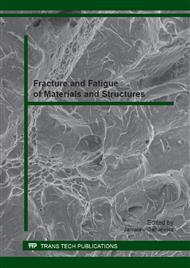p.1
p.7
p.13
p.20
p.26
p.32
p.39
p.45
Test Stand and Method for Determination of the Usefulness of the Magnetorheological Composites in Active Suspension Systems
Abstract:
Abstract. The paper presents test stand designed for testing magnetorheological composites (MRC) under dynamic loading, together with the method for obtaining damping characteristics of the tested material. The test stand is based on Single-Degree-Of-Freedom system excited with use of modal hammer. The MRC is stimulated with use of double circular dipolar Halbach array based on neodymium magnets. The analysis of the experimental results is performed with use of the half-power method and the circle-fit method. results presented in the paper show usefulness of the test stand and of the method for obtaining damping parameters of the MRC. The results present change in the damping character of the material under variable magnetic field.
Info:
Periodical:
Pages:
7-12
Citation:
Online since:
January 2014
Authors:
Keywords:
Price:
Сopyright:
© 2014 Trans Tech Publications Ltd. All Rights Reserved
Share:
Citation:


